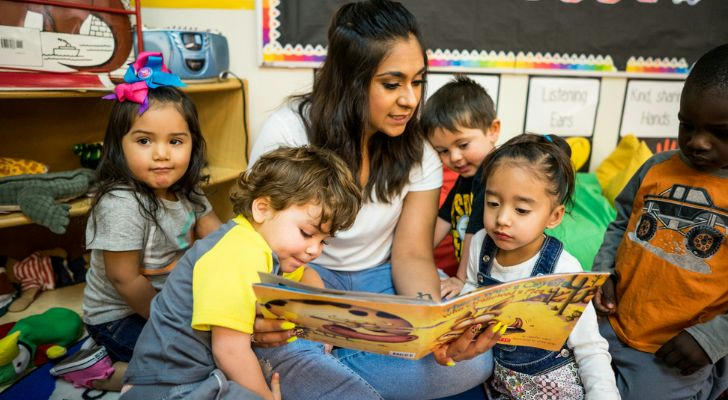The Science of Early Childhood Education: Unlocking Your Child’s Potential
Children's brains develop faster between the ages of 0-5 than ever before. Every giggle, doodle, and block tower is more than just play; it's laying the neural foundation for lifelong learning. That's why high-quality early childhood education is essential. In this guide, we'll decode brain science, debunk myths about "gifted" programs, and reveal how affordable, research-backed programs can put your child on a path to academic excellence and emotional resilience.

1. Neuroscience 101: How Early Learning Rewires the Brain
Your child’s brain is a biological supercomputer. Here’s what happens when you invest in early education:
Key Brain Development Milestones
| Age Group | Cognitive Skill | Achieved Through |
|---|---|---|
| 0–1 | Basic sensory perception | Touch, taste, sound exploration |
| 1–3 | Language acquisition | Interactive storytelling, songs |
| 3–5 | Problem-solving, creativity | Hands-on puzzles, imaginative play |
The Magic of Play
- Neuroplasticity boost: Play-based learning increases dopamine levels, accelerating neural connections.
- Stress resilience: Structured play reduces cortisol levels by 25% in high-pressure situations.
💡 Fun Fact: A 2023 MIT study found children in high-quality preschools had 30% more synaptic connections in memory-related brain regions.

2. Curriculum Models: Which Science-Validated Approach Works Best?
Not all preschool programs are created equal. Let’s compare research-backed models:
| Program Type | Age Range | Key Science-Backed Features | Average Cost per Month |
|---|---|---|---|
| Montessori | 2–6 | Self-directed learning, mixed-age classrooms | $150–$300 |
| Reggio Emilia | 3–6 | Project-based learning, authentic assessment | $180–$400 |
| HighScope | 4–6 | Hands-on STEM activities, scaffolding | $200–$500 |
| Play-Based | 2–5 | Social-emotional learning, open-ended play | $120–$250 |
What Makes a Program "Brain-Friendly"?
- Accreditation: Look for CCSS or Head Start approval.
- Curriculum alignment: Should match state early learning standards.
- Teacher-student ratio: 1:8 or better ensures personalized attention.
3. Budget-Friendly Secrets: Quality Doesn’t Have to Break the Bank
You don’t need to spend a fortune to access excellence. Here’s how:
Cost-Saving Strategies
- Sliding scale fees: Many programs offer discounts based on family income.
- Sibling discounts: Save 20–30% when enrolling multiple children.
- Community partnerships: Local libraries or nonprofits often host free/low-cost workshops.
Sample Budget Comparison
| Program | Monthly Cost | Features Included |
|---|---|---|
| Premium Academy | $450 | 1:5 teacher ratio, field trips |
| SmartStart Prep | $220 | Hybrid learning (in-person + online) |
| Neighborhood Hub | $90 | Volunteer-led, limited hours |

4. Long-Term Benefits: Beyond ABCs
Early education impacts life in ways you might not expect:
Career Success
- Higher earnings: Graduates of elite preschools earn **$20k+ more annually** by age 30.
- Leadership skills: Collaboration-based curricula build teamwork and communication abilities.
Emotional Intelligence
- Conflict resolution: Programs teaching empathy reduce aggression by 40% in elementary school.
- Resilience: Structured play helps children cope with stress and setbacks.
5. How to Choose: A Parent’s Decision-Making Framework
Use this step-by-step guide to avoid overwhelm:
Step 1: Assess Needs
- Learning style: Does your child thrive in structured or free-play environments?
- Schedule: Morning, afternoon, or weekend sessions?
Step 2: Research Providers
- Visit campuses: Observe teacher-student interactions.
- Ask for transparency: Request detailed curricula and progress reports.
Step 3: Compare Costs
- Hidden fees: Watch for registration fees, supply costs, or transportation charges.
- Scholarships: Some programs offer full-ride scholarships for low-income families.

6. Future-Ready Skills: Preparing for 2030
Modern preschools focus on skills that future employers demand:
STEAM Education
- Coding basics: Simple apps teach logic and problem-solving.
- Science experiments: Hands-on activities explore biology and physics.
Digital Literacy
- Tablet use: Age-appropriate apps improve fine motor skills.
- Online safety: Lessons on privacy and cybersecurity.
Conclusion: Investing in Tomorrow’s Leaders
Early childhood education isn’t about creating geniuses—it’s about nurturing well-rounded humans capable of critical thinking, creativity, and emotional intelligence. By choosing science-backed, affordable programs, you’re giving your child the tools to thrive in an ever-changing world. Remember: The best investment you can make is in your child’s potential.
